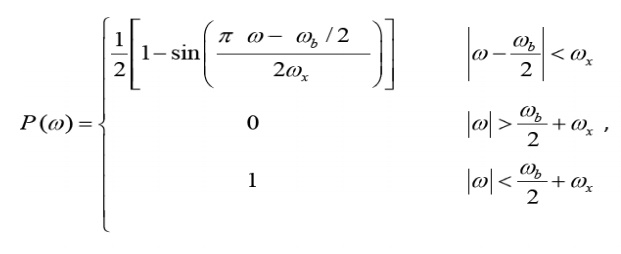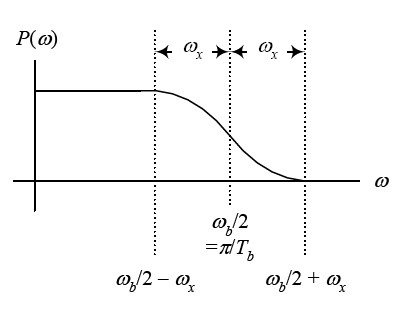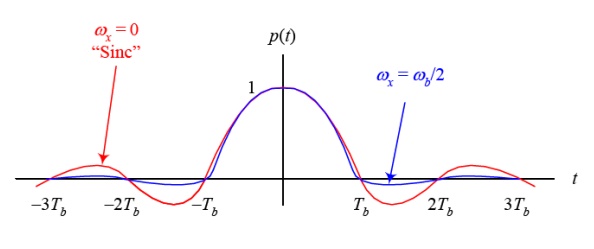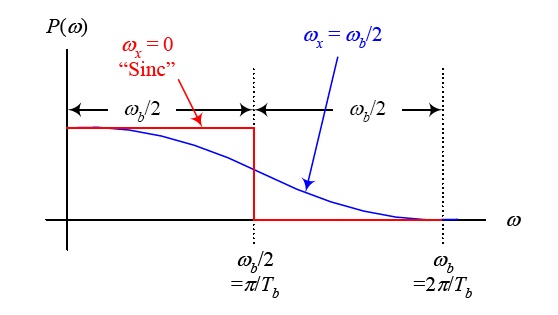Chapter: Digital Communication : Baseband Transmission
Nyquist Criterion for Zero-ISI
Nyquist Criterion for Zero-ISI
Nyquist
proposed a condition for pulses p(t) to have zero–ISI when transmitted
through a channel with sufficient bandwidth to allow the spectrum of all the
transmitted signal to pass. Nyquist proposed that a zero–ISI pulse p(t)
must satisfy the condition

A pulse
that satisfies the above condition at multiples of the bit period Tb will result in zero– ISI if the whole
spectrum of that signal is received. The reason for which these zero–ISI pulses
(also called Nyquist–criterion pulses) cause no ISI is that each of these
pulses at the sampling periods is either equal to 1 at the center of pulse and
zero the points other pulses are centered.
In fact,
there are many pulses that satisfy these conditions. For example, any square
pulse that occurs in the time period –Tb
to Tb or any part of it (it must be
zero at –Tb and Tb) will satisfy the above condition.
Also, any
triangular waveform („Δ‟ function) with a width that is less than 2Tb will also satisfy the condition. A
sinc function that has zeros at t = Tb, 2Tb,
3Tb, … will also satisfy this
condition. The problem with the sinc function is that it extends over a very
long period of time resulting in a lot of processing to generate it. The square
pulse required a lot of bandwidth to be transmitted. The triangular pulse is
restricted in time but has relatively large bandwidth.
There is
a set of pulses known as raised–cosine pulses that satisfy the Nyquist
criterion and require slightly larger bandwidth than what a sinc pulse (which
requires the minimum bandwidth ever) requires.
The
spectrum of these pulses is given by

Where ω b is the frequency of bits in rad/s (ω b = 2 /Tb), and x is called the
excess bandwidth and it defines how much bandwidth would be required above the
minimum bandwidth that is required when using a sinc pulse. The excess
bandwidth ω x for this type of pulses
is restricted between

Sketching
the spectrum of these pulses we get

We can
easily verify that when ωx = 0, the
above spectrum becomes a rect function, and therefore the pulse p(t)
becomes the usual sinc function. For ωx
= b/2, the spectrum is similar to a
sinc function but decays (drops to zero) much faster than the sinc (it extends
over 2 or 3 bit periods on each side). The expense for having a pulse that is
short in time is that it requires a larger bandwidth than the sinc function (twice
as much for ωx =ω b/2). Sketch of the pulses and their
spectrum for the two extreme cases of ω x
=ωb/2 and ωx = 0 are shown below


We can
define a factor r called the roll–off
factor to be

The
roll–off factor r specifies the ratio
of extra bandwidth required for these pulses compared to the minimum bandwidth
required by the sinc function.
Related Topics